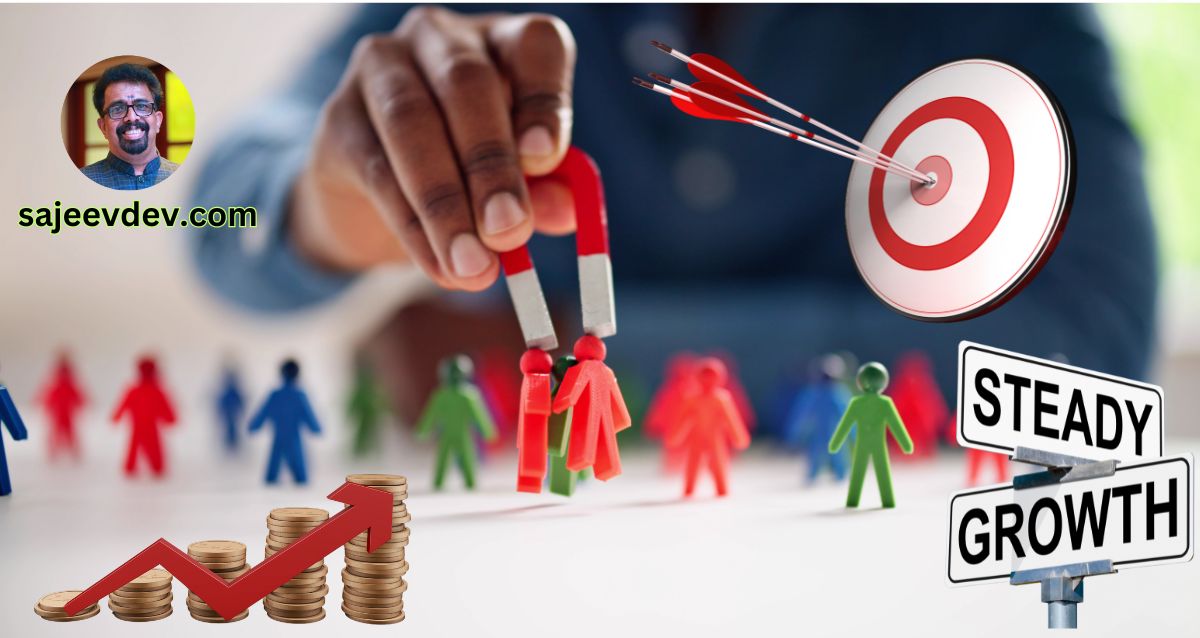The Race of Life
Life can often be compared to a car race, where the journey is filled with twists, turns, and unexpected challenges. Much like a race, success in life isn’t solely determined by how fast one moves but by the strategic decisions made along the way. In a car race, a driver must exhibit not only speed but also a keen sense of timing, knowing when to accelerate, when to brake, and when to make crucial pit stops. Similarly, in the race of life, individuals must make timely decisions that can significantly impact their trajectory towards success.
This article delves into the critical interplay between timing and decision-making in our lives. By examining how these elements influence our personal and professional paths, we aim to provide insights and strategies for navigating life’s race more effectively. Whether it’s choosing the right moment to seize an opportunity or deciding when to pivot in a different direction, mastering the art of timing and decision-making can be the key to not just participating but excelling in the race of life.
As we explore this analogy further, we will uncover the various facets of decision-making and the role that timing plays in achieving our goals. From understanding the importance of patience and foresight to recognizing the value of quick, decisive action, this discussion will highlight how these skills can be developed and applied in various contexts. Ultimately, the aim is to equip you with the knowledge and tools needed to make informed decisions that propel you towards success, ensuring that you remain a strong contender in the race of life.
Understanding the Concept of Timing
Timing is a critical factor that influences the outcomes of various aspects of life, from sports and business to personal relationships. In essence, timing involves the strategic selection of when to act or when to wait, which can significantly affect the results. For instance, in sports, the concept of timing is pivotal. A sprinter must know the exact moment to burst off the starting block to gain an advantage over competitors. Similarly, a basketball player needs precise timing to make a successful shot, as even a fraction of a second can determine whether the ball goes through the hoop or misses.
In the business world, timing is equally crucial. Entrepreneurs often succeed or fail based on their ability to launch products or services at the right moment. Consider the case of Apple Inc., whose introduction of the iPhone revolutionized the smartphone market. The timing of its release, coupled with technological advancements and consumer readiness, played a significant role in its success. Conversely, launching a similar product too early or too late could have resulted in a lackluster reception.
Personal relationships also hinge on timing. Meeting the right person at the right time can lead to lasting connections, while missed opportunities may result in regret. For example, proposing to a partner at a moment when both parties are emotionally aligned can strengthen the relationship, whereas poor timing might create tension or uncertainty.
Good timing often means recognizing the perfect moment to make a move or, conversely, to hold back. It requires a keen understanding of the context and the ability to anticipate potential outcomes. Mastering the art of timing can lead to more favorable results across various domains, underscoring its importance in the race of life.
The Role of Decision-Making in Success
Decision-making is an indispensable skill that plays a fundamental role in shaping the trajectory of one’s life. The ability to make informed, well-thought-out decisions often serves as the cornerstone of success in both personal and professional realms. Effective decision-making involves a combination of critical thinking, risk assessment, and intuition, allowing individuals to navigate complex situations and seize opportunities as they arise.
One of the most compelling examples of the impact of decision-making on success can be found in the career of Steve Jobs, co-founder of Apple Inc. Jobs’ decision to return to Apple in 1997, at a time when the company was struggling, is often cited as a turning point in the tech industry. His strategic decisions, including the development of the iPod, iPhone, and iPad, not only revitalized Apple but also revolutionized the way people interact with technology.
Similarly, Oprah Winfrey’s journey to becoming a media mogul underscores the significance of decision-making in achieving success. Winfrey made a series of calculated decisions throughout her career, from starting her own production company to launching the Oprah Winfrey Network (OWN). Each decision was meticulously planned and executed, contributing to her enduring influence and success in the media industry.
Moreover, decision-making is not confined to business or career achievements; it also plays a crucial role in personal life. For instance, individuals who prioritize their health by making informed dietary and lifestyle choices often enjoy longer, healthier lives. These decisions, though seemingly small, accumulate over time to produce significant outcomes.
In essence, the role of decision-making in success cannot be overstated. It is a skill that requires continuous development and refinement, as the quality of one’s decisions directly influences the path and achievements of their life. By honing this skill, individuals can better position themselves to achieve their goals and navigate the complexities of life with greater confidence and clarity.
The Interplay Between Timing and Decision-Making
In the race of life, the synergy between timing and decision-making often dictates success or failure. The interrelation of these two critical factors can be observed in various real-life scenarios, illustrating how even the best decisions can falter if not executed at the opportune moment.
Consider the example of launching a startup. A groundbreaking idea and a robust business plan are essential, but their value diminishes if the market isn’t ready. For instance, numerous online grocery delivery services emerged in the early 2000s, but many failed due to poor timing. The market was not yet accustomed to online shopping, and the necessary infrastructure was lacking. Fast forward to the 2020s, and the same business concept is thriving, illustrating how timing can make or break a decision.
Conversely, a perfect opportunity can be squandered by poor decision-making. Imagine an investor who identifies a booming real estate market. The timing is impeccable, but if the investor lacks due diligence or chooses the wrong properties, the financial outcome can be disastrous. Thus, the interplay between recognizing the right moment and making informed decisions is crucial.
Timing and decision-making also play a pivotal role in personal life choices. Take career moves as an example. An individual may decide to switch careers for better prospects. However, if this change occurs during an economic downturn, the chances of securing a new job may diminish, leading to potential setbacks. On the other hand, making this decision during a booming economy can lead to significant career advancement, demonstrating the importance of aligning decisions with the right timing.
In essence, the interplay between timing and decision-making underscores the complexity of achieving success. It is not merely about making the right choices but also about ensuring that these choices are executed at the optimal time. Balancing these elements can significantly influence outcomes in both professional and personal spheres, highlighting their profound impact on the race of life.
Strategies for Improving Timing Skills
Developing effective timing skills is crucial for making well-informed decisions and seizing opportunities. One essential strategy is to cultivate the ability to read situations accurately. This involves observing patterns and understanding the context in which events occur. For instance, in a professional setting, recognizing market trends or gauging team dynamics can significantly impact the success of your decisions.
Anticipating opportunities is another key aspect of honing your timing skills. This requires an analytical mindset and the ability to foresee potential outcomes. One practical exercise is scenario planning, where you consider various future scenarios and their potential impacts. This not only sharpens your predictive abilities but also prepares you for different possibilities, enabling more strategic decision-making.
Avoiding hasty actions is equally important. Impulsivity can often lead to mistakes that could have been avoided with a bit more patience. Practicing mindfulness can help in this regard. When faced with a decision, take a moment to breathe and reflect before acting. This pause allows you to consider all factors and make a more balanced choice.
Engaging in exercises that simulate real-life situations can also enhance your timing skills. For example, time management games or strategic board games like chess can be excellent tools for practicing decision-making under pressure. These activities require you to think several steps ahead and consider the timing of each move, thereby improving your overall strategic thinking.
Finally, learning from past experiences is invaluable. Reflect on previous decisions and their outcomes to identify patterns and areas for improvement. Keeping a decision journal can be a useful practice; it allows you to track your thought processes and timing, providing insights that can inform future actions.
By integrating these strategies into your daily routine, you can develop more refined timing skills, ultimately leading to better decision-making and greater success in both personal and professional endeavors.
Techniques for Better Decision-Making
Effective decision-making is crucial in navigating the complexities of life. Several techniques can aid in making more informed and confident choices. One widely-used method is the SWOT analysis, which involves evaluating the Strengths, Weaknesses, Opportunities, and Threats related to a decision. This framework enables individuals to systematically consider all aspects and potential impacts, leading to a more balanced perspective.
Another helpful tool is creating a pros and cons list. By listing the positive and negative aspects of each option, individuals can visually compare the potential outcomes. This method helps in clarifying thoughts and identifying the most beneficial choice. Additionally, decision matrices and other decision-making frameworks can provide structured approaches to complex problems, ensuring that all relevant factors are considered.
Gathering comprehensive information is a fundamental step in the decision-making process. Access to accurate and up-to-date data allows for more informed choices. Consulting with others, such as mentors, colleagues, or experts, can also provide valuable insights and different perspectives. This collaborative approach can unveil considerations that may have been overlooked.
While analytical methods and external advice are essential, trusting one’s intuition should not be underestimated. Intuition, often based on past experiences and deep-seated knowledge, can guide individuals in making decisions that align with their values and goals. Balancing intuition with rational analysis ensures a holistic approach.
Ultimately, mastering decision-making techniques can significantly enhance one’s ability to make timely and effective choices, thereby improving the quality of personal and professional life.
Learning from Mistakes: Course Correction
In the journey of life, mistakes are inevitable. They often serve as critical learning opportunities that can steer us towards growth and success. The concept of course correction emphasizes the importance of recognizing when a decision or action is not yielding the desired outcome and making necessary adjustments. This process is not merely about rectifying errors but also about refining one’s approach and timing to better align with goals and aspirations.
One of the key aspects of effective course correction is the ability to reflect on past experiences without self-reproach. Analyzing what went wrong, understanding the factors that led to the mistake, and identifying alternative strategies are essential steps in this process. This reflective practice enables individuals to avoid repeating the same errors and to make more informed decisions in the future.
History is replete with examples of renowned personalities who have successfully navigated failures and emerged stronger. Take, for instance, Thomas Edison, whose numerous attempts to invent the electric light bulb were fraught with setbacks. Rather than viewing his failed experiments as defeats, Edison famously remarked, “I have not failed. I’ve just found 10,000 ways that won’t work.” His ability to persist and adapt eventually led to a groundbreaking invention that transformed the world.
Similarly, Oprah Winfrey’s early career was marked by challenges. Fired from her first television job, she faced significant professional setbacks. However, Winfrey’s resilience and willingness to learn from these experiences enabled her to recalibrate her career path, ultimately becoming a media mogul and inspirational figure.
The stories of Edison and Winfrey exemplify the power of embracing mistakes as part of the growth process. By viewing errors as valuable lessons, individuals can develop a mindset that fosters continuous improvement. Effective course correction involves not only the willingness to adapt but also the courage to take calculated risks, ensuring that each decision is better informed by past experiences.
Embrace the Journey
In conclusion, the race of life is not merely about reaching the finish line but about navigating the path with skill, wisdom, and joy. Throughout this article, we have examined the critical significance of timing and decision-making. These elements are not just abstract concepts but practical tools that can profoundly influence our personal and professional lives. By mastering the art of timing, we learn to act at the most opportune moments, maximizing our chances of success. Similarly, sound decision-making enables us to choose the best paths, enhancing our ability to overcome challenges and seize opportunities.
Life, with its inherent unpredictability, presents a series of ups and downs. It is essential to embrace these fluctuations, understanding that each phase contributes to our growth and resilience. Rather than viewing setbacks as failures, recognize them as valuable lessons that guide us towards more informed and wise decisions in the future. Success in the race of life is not solely defined by achievements but by how we respond to and learn from our experiences.
As you continue on your journey, remember that every decision you make and every moment you seize shapes your path. Approach life’s race with a balanced perspective, focusing not just on the destination but on the quality of the journey itself. Cultivate patience, be mindful of the timing of your actions, and prioritize thoughtful decision-making. By doing so, you will not only enhance your chances of success but also enrich the overall experience of living.
Ultimately, the race of life is a continuous and evolving journey. Embrace it with enthusiasm and courage, and strive to make the most of every moment. Remember, the goal is not just to finish but to enjoy the ride and to navigate your path with wisdom and grace.



